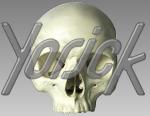
- Language Reference
- Function Reference
- I/O Reference
- Opening and Closing Text Files
- Reading Text
- Writing Text
- Positioning a Text File
- Opening and Closing Binary Files
- Saving and Restoring Variables
- Reading History Records
- Writing History Records
- Opening Non-PDB Files
- Making Plots
- Plot Paging and Hardcopy
- Setting Plot Limits
- Managing Graphics Windows
- Graphics Query, Edit, and Defaults
Yorick Language Reference
Making Plots
plg, y, x plot graph of 1-D y vs. x
plm, mesh_args plot quadrilateral mesh
plc, z, mesh_args plot contours of z
plf, z, mesh_args plot filled mesh, filling with z
plv, v, u, mesh_args plot vector field (u,v))
pli, z, x0, y0, x1, y1 plot image
z
pldj, x0, y0, x1, y1 plot disjoint lines
plt, text, x, y plot text at (x,y )
The mesh_args may be zero, two, or three arguments as follows:
- omitted to use the current default mesh set by:
plmesh, mesh_args set default quadrilateral mesh
plmesh delete current default quadrilateral mesh - y, x
To set mesh points to (x, y ), which must be 2-D arrays of the same shape, with at least two elements in each dimension. - y, x, ireg
To set mesh points to (x, y ), as above, with a region number array ireg. The ireg should be an integer array of the same shape as y and x, which has a non-zero ``region number'' for every meaningful zone in the problem. The first row and column of ireg do not correspond to any zone, since there are one fewer zones along each dimension than points in y and x.
The plc command accepts the levs keyword to specify the list of z values to be contoured; by default, eight linearly spaced levels are generated.
The plc and plmesh commands accept the triangle keyword to specify a detailed triangulation map for the contouring algorithm. Use the help, triangle for details.
The plv command accepts the scale keyword to specify the scaling factor to be applied to (u, v) before rendering the vectors in (x, y) space; by default, the vector lengths are chosen to be comparable to typical zone dimensions.
The plm command accepts the boundary keyword, which should be set to 1 if only the mesh boundary, rather than the mesh interior, is to be plotted.
The plm, plc, plf, and plv commands accept the region keyword to restrict the plot to only one region of the mesh, as numbered by the ireg argument. The default region is 0, which is interpreted to mean the every non-0 region of the mesh.
The pli command produces a cell array; the x0, y0, x1, y1, which are optional, specify the coordinates of the opposite corners of the cell array.
Numerous other keywords adjust the style of lines, text, etc.